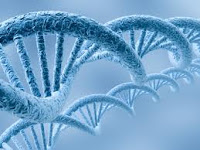Uses of DNA Sequencing
DNA sequencing. Techniques for accessing base pairs sequence, DNA sequencing, gives us access to the genetic code. The most commonly used technique today is called dideoxy sekvensering or Sanger sequencing, named after Frederick Sanger who developed the method. This technique uses a DNA polymerase , which in test tube can make a copy of a DNA-bit (Primary). A synthetic oligonucleotide added is used as a primer and decide where the copy should begin. As the building blocks used four deoxy ribonukleosid triphosphate, but it also adds an analogue of one of these. This lack hydroxyl in 3-position deoxyribose group. This deoxy ribon nucleoside triphosphate will be introduced in the growing DNA strand in competition with the corresponding normal nucleoside triphosphate.
Growing DNA strands that have been introduced analogue, will not be able to grow on. The result of the reaction will thus be that you have formed a series of DNA fragments that everyone starts the same primersete and ending of the same videos nukleotid. Base sequence of the added template DNA will determine in which positions dideoxy nucleotides can be introduced and thus the size of DNA fragments that are formed. Fragment sizes can be determined by that separates the fragments from each other by electrophoresis. By performing four different reactions, each with one of the four dideoksyribose nukleosid trifosfatene present and analyze the four reactions by electrophoresis, one will observe a known sequence ladder where the base sequence of DNA strand can be read directly. In order to be able to detect the fragments, they must be marked. Previously used the radioactive labeling, but now usually fluorescent marking.
Modern instruments for DNA sequencing can analyze hundreds of template DNA simultaneously and read 500-1000 bases for each reaction. The human genome was read in factories with hundreds of such instruments.






